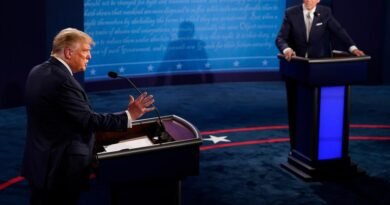How Ukraine’s Kursk operation could alter the game for Putin

Ukraine has initiated a significant military operation to seize and hold territory within Russia.
This action is unprecedented, marking the first instance since World War II that the armed forces of a sovereign nation have invaded and occupied Russian land.
Volodymyr Zelensky’s bold move carries high risks and high rewards: By holding Russian territory, Kyiv gains a strong bargaining chip in potential negotiations for the end of the war.
Through the deployment of troops into Russia’s vulnerable southern region, Zelensky has delivered a substantial blow to Vladimir Putin.
Ukraine’s military tactic to secure part of the Kursk Region reflects the wisdom of the legendary strategist Sun Tzu: “Strike where the enemy is most vulnerable.”
With the majority of Putin’s forces engaged in Ukraine, Zelensky has mobilized his own troops, reportedly over 1,000, into the weakly defended northern border zone.
Now, the dynamic has shifted: The conflict for Ukraine has extended into Russia, leading to mass evacuations of Putin’s citizens from their homes.
While the Ukrainian government maintains silence during such critical operations, Zelensky’s advisor Mykhailo Podolyak suggests that Ukraine intends to maintain its gains: “We must push them back in certain areas to ensure our safety,” he stated. “We are establishing a buffer zone.”
Zelensky himself has affirmed: “Russia brought the war to our land, and it must face the consequences.”
This approach also provides new political leverage.
Current polls show that a majority of Ukrainians oppose exchanging their land for peace with Putin, vehemently rejecting any surrender of their territory to end the war.
Would they be willing to trade Russian land for peace? This is a crucial consideration for Zelensky now that Ukrainian troops control Russian territory and the upcoming US presidential election looms.
During his campaign, Donald Trump has reiterated that he could resolve the Russia-Ukraine conflict “in 24 hours.”
Potential negotiations for a ceasefire are more plausible if Zelensky can offer something that the majority of Ukrainians and Putin would accept: Russian territory.
Surprisingly, the sudden Ukrainian offensive caught the Biden-Harris administration off guard.
The State Department confirmed that the United States was not informed in advance of Ukraine’s incursion, leaving National Security spokesman John Kirby taken aback.
He acknowledged, “We are in contact with our Ukrainian counterparts to gain a better understanding of the situation.”
On his part, Putin remained composed. In a televised address, he portrayed the Ukrainian incursions into Russia as a “large-scale provocation,” rather than an invasion.
His choice of words was significant: Russia’s military doctrine permits the use of tactical nuclear weapons if a conventional attack poses a threat to Russia’s existence.
By treating Ukraine’s actions as a provocation rather than an existential threat, Putin indicated that nuclear escalation is not on the table.
However, this “provocation” necessitates Russia to reinforce its entire border with additional troops to thwart future Ukrainian incursions.
The political blow to Putin is substantial: This is the first time since 1941 that a foreign country has occupied Russian territory.
It also evokes memories of foreign military occupations during Russia’s Revolution and Civil War nearly a century ago, which remain poignant in Russian political history.
Putin’s leadership hinges on his pledge to protect Russians. For the second time in six months (following the March terror attack in Moscow), he has failed to do so for at least some of his citizens.
Currently, Ukraine’s president is keeping his plans close to his chest, elevating the stakes.
His next moves could shape the outcome of the war for Ukraine’s survival.
Peter Doran is adjunct senior fellow at the Foundation for Defense of Democracies.



